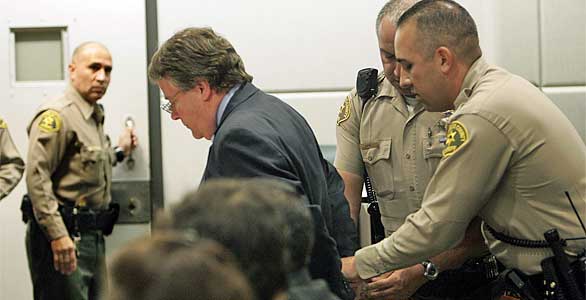By SAMANTHA YOUNG , Associated Press (reported in the Minneapolis – St. Paul Star Tribune)
Local parks slated for closure include
The California State Parks Foundation has compiled a complete list of parks proposed to be closed. What you can do to help prevent closure of our parks
|
SACRAMENTO, Calif. – Gov. Arnold Schwarzenegger’s budget cuts could mean the closing of up to 220 state parks, among them the home of the world’s tallest tree and other attractions that draw millions of visitors. Schwarzenegger this week recommended eliminating $70 million in parks spending through June 30, 2010. An additional $143.4 million would be saved in the following fiscal year by keeping the parks closed.
“This is a worst-case scenario,” said Roy Sterns, a spokesman at the state parks department. “If we can do less than this, we will try. But under the present proposal, this is it.”
Among the parks that could be closed, the parks department said Thursday, are Lake Tahoe’s Emerald Bay, Will Rogers’ Southern California ranch and Humboldt Redwoods State Park, which boasts the world’s tallest tree, a giant that tops 370 feet. Even the Governor’s Mansion in Sacramento is on the list.
The Legislature last year rejected the governor’s proposal to close 48 state parks. But lawmakers said that with California’s budget deficit now at $24.3 billion, the situation is so dire that it is likely some parks will close.
“Things that were previously dead on arrival are a lot more viable in a crisis like this,” said Democrat Jared Huffman, chairman of the Assembly’s parks and wildlife committee. “I think some cuts are coming to the parks, and they’ll be cuts I won’t like and the public won’t like.”
The state parks department said a $70 million cut would leave it with enough money to run just 59 of California’s 279 state parks.
The state’s famed park system attracts nearly 80 million visitors a year. William Randolph Hearst’s Castle on the Central Coast and a dozen other so-called moneymakers would remain open, as would many Southern California beaches that attract millions of visitors year round.
But others that could close include: Fort Ross State Historic Park, the southernmost Russian settlement in North America; Bodie State Historic Park, one of the best-preserved Old West ghost towns; and Big Basin Redwoods, the oldest state park.
The proposal has angered conservationists and some Democrats in the Legislature, who say California’s parks are treasured spots that help the state and local economy.
“State parks draw tourism to California,” State Parks Foundation president Elizabeth Goldstein said. “This proposal makes the budget situation worse.”
The foundation estimates the state gets a $2.35 return for every dollar it spends on parks.
California spends roughly $400 million a year running 279 state parks and beaches, with roughly a third of the money coming from the state general fund. The rest comes from user fees, which account for slightly more than a quarter of the revenue; bond funds; gasoline taxes; federal money; and other sources.
Assembly Minority Leader Mike Villines said the state cannot afford to subsidize state parks when lawmakers are being asked to make severe cuts in even more vital areas.
“Parks are just not going to be a priority over public safety and education, as much as we hate to see them close,” Villines said.
At least 2,000 park rangers, biologists, lifeguards, interpreters, architects and maintenance workers would be laid off if the proposal is adopted, said Sterns, the parks spokesman.
The layoffs would be in addition to 5,000 state positions the governor has already recommended cutting.
“When you cut that much, you have to let go highly trained teams of biologists that you can’t get back in a year or two,” Huffman said. “It’s a myth to think you can mothball the entire system. These cuts will cripple the park system for a decade or more.”


 “Active Community Transportation Act of 2010” Introduced in the U.S. House of Representatives
“Active Community Transportation Act of 2010” Introduced in the U.S. House of Representatives
 June 19, 2009
June 19, 2009
